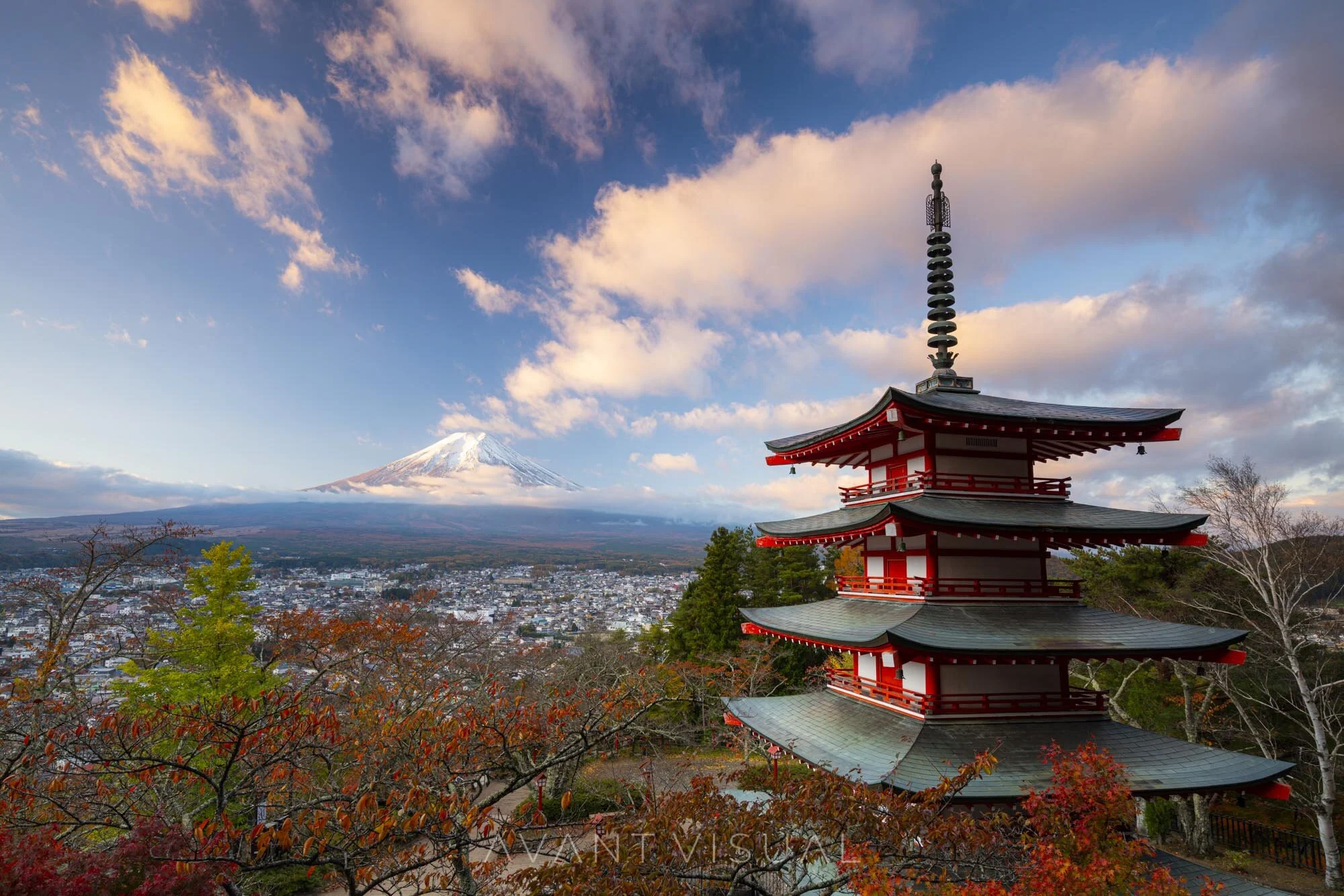Foutou Si: Your Ultimate Guide to Exploring China’s Cultural Heritage Site

An Essential Guide to Visiting Foutou Si
In This Guide
- An Essential Guide to Visiting Foutou Si
- The Rich History and Legends of Foutou Si
- Main Highlights: What You Absolutely Can’t Miss
- Planning Your Visit: A Practical Guide
- Tickets: Prices, Booking, and Tips
- How to Get There: A Complete Transportation Guide
- Local Cuisine and Accommodation Nearby
- Frequently Asked Questions
- Final Thoughts on Your Trip
Nestled within the serene landscape of Shaoxing in Zhejiang Province, Foutou Si (佛头寺), or the Temple of the Buddha’s Head, stands as a testament to China’s rich spiritual heritage and architectural grandeur. This ancient temple complex, dating back to the Southern Song Dynasty, offers visitors not only a glimpse into Buddhist practices but also an immersion in the tranquil charm of traditional Chinese culture. As you approach Foutou Si, you are greeted by a striking landscape where the majestic hills cradle the temple, creating an atmosphere that feels both sacred and inviting.
Foutou Si is renowned for its stunning architecture, featuring intricately carved wooden halls and vibrant murals that narrate tales of devotion and enlightenment. The highlight of the temple is undoubtedly its lifelike Buddha statue, which has become a symbol of peace and serenity for pilgrims and tourists alike. The temple’s serene surroundings, complemented by the soothing sounds of flowing water and rustling leaves, provide a perfect backdrop for reflection and exploration.

Foutou Si.
As you wander through Foutou Si, you’ll discover that this site is not merely a destination but a journey into China’s spiritual heart. Whether you are seeking enlightenment, tranquility, or simply a deeper understanding of Chinese culture, Foutou Si promises an enriching experience that lingers long after you leave. In this guide, we will delve into the essential details that will enhance your visit, ensuring that your time at Foutou Si is both memorable and meaningful.
The Rich History and Legends of Foutou Si
A Journey Through Time: The History and Legends of Foutou Si
Nestled within the serene landscapes of Fengxian District in Shanghai, Foutou Si (佛头寺), or the Buddha Head Temple, is a hidden gem that whispers tales of a rich historical past. This ancient temple, believed to date back to the Southern Song Dynasty (1127-1279), is not only a place of worship but also a historical treasure that embodies the spiritual and cultural evolution of Buddhism in China.
Historical Significance
Origins and Development
Foutou Si was originally established as a center for Buddhist teachings and practices. The temple flourished during the Ming and Qing Dynasties, attracting monks and scholars from across the region. Its name, which translates to “Buddha Head Temple,” is derived from the large stone Buddha head that was discovered on the site, believed to be a remnant from an earlier temple that once stood there.

Foutou Si.
Architectural Marvel
The temple complex showcases traditional Chinese architecture, with ornate eaves and intricate carvings that tell stories of Buddhist legends. Over the centuries, Foutou Si has undergone numerous renovations, each adding layers to its historical narrative. The temple grounds are adorned with serene gardens and tranquil ponds, creating a peaceful atmosphere that reflects the essence of Zen Buddhism.
Legends and Folklore
The Buddha Head Legend
One of the most captivating legends surrounding Foutou Si is the tale of the Buddha head itself. According to local lore, the head was discovered by a wandering monk who, upon finding it, was struck by its beauty and serenity. This monk decided to build a temple in its honor, and thus, Foutou Si was born. Visitors often come seeking the blessings of the Buddha, hoping to experience the tranquility that the legend promises.

Foutou Si.
The Guardian Spirits
Another intriguing aspect of the temple’s folklore involves the guardian spirits believed to protect the site. Local tradition holds that two ancient dragons serve as protectors of the temple. It is said that during times of natural calamities, the dragons would emerge from the nearby waters to shield the temple and its inhabitants, ensuring that the spiritual sanctity of Foutou Si remained intact.
Cultural Heritage
Buddhism’s Influence
Foutou Si stands as a testament to the profound impact of Buddhism on Chinese culture. The temple not only serves as a place of worship but also as a cultural hub where art, philosophy, and community converge. The annual ceremonies, festivals, and rituals held at the temple draw visitors and practitioners alike, fostering a sense of unity and shared heritage.

Foutou Si.
Artistic Endeavors
The temple has also been a source of inspiration for artists and poets throughout history. Its serene surroundings and rich history have spurred the creation of numerous works of art, including calligraphy, painting, and poetry that pay homage to the temple’s beauty and spiritual significance.
Visiting Foutou Si Today
For travelers seeking to immerse themselves in China’s rich tapestry of history and culture, Foutou Si offers a unique glimpse into the past. Walking through its hallowed halls, one can feel the echoes of centuries of devotion, wisdom, and artistry. As you explore the temple, take a moment to reflect on the legends that have shaped its identity and the historical currents that continue to flow through this sacred space.
In conclusion, Foutou Si is not merely a destination; it is a journey through time, a place where history and legend intertwine, inviting visitors to discover the profound spiritual legacy of Buddhism in China. Whether you are a history enthusiast, a spiritual seeker, or a cultural explorer, Foutou Si promises an enriching experience that resonates long after your visit.

Foutou Si.
Main Highlights: What You Absolutely Can’t Miss
Discover the Unmissable Highlights of Foutou Si (佛头寺)
Nestled in the heart of Jiangxi Province, Foutou Si, or the “Buddha Head Temple,” is a treasure trove of history and culture that captivates visitors with its serene beauty and profound spirituality. Whether you’re a seasoned traveler or a first-time explorer of China’s rich heritage, this temple offers an array of experiences that you simply cannot miss.
1. The Majestic Buddha Head
Iconic Landmark
At the core of Foutou Si lies its most famous feature: the enormous Buddha head carved directly into the rock. This remarkable statue stands as an enduring symbol of peace and enlightenment. Standing at approximately 12 meters tall, it is an awe-inspiring sight that draws visitors from around the globe. Spend a moment in reflection, contemplating the artistry and devotion that went into its creation.

Foutou Si.
2. Ancient Architecture
A Journey through Time
As you wander through the temple grounds, take note of the intricate traditional architecture that showcases the craftsmanship of ancient Chinese builders. From the beautifully adorned eaves to the graceful arches, each structure tells a story of a bygone era. Don’t forget to capture the stunning details of the temple’s façades, which are often adorned with symbolic carvings and statues.
3. Tranquil Gardens
A Peaceful Retreat
The temple complex is surrounded by meticulously maintained gardens that provide a tranquil atmosphere for meditation and reflection. Stroll along the winding paths, breathe in the fresh air, and let the serene environment rejuvenate your spirit. These gardens are perfect for capturing beautiful photographs, especially during the blooming seasons when flowers add vibrant colors to the landscape.

Foutou Si.
4. Cultural Exhibits
Engage with History
Foutou Si is more than just a religious site; it is also a cultural hub. The temple hosts various exhibits and displays that delve into Buddhist teachings and practices, as well as the history of the temple itself. Engage with the informative plaques and take guided tours to gain deeper insights into the significance of this sacred site.
5. Ceremonial Activities
Witness Spiritual Practices
If your visit coincides with a religious ceremony, you are in for a truly unique experience. Foutou Si often hosts rituals and ceremonies that are integral to Buddhist culture. Witnessing monks in their ceremonial robes, chanting in harmony, and performing traditional rites allows visitors to connect with the spiritual essence of the temple.
6. Scenic Surroundings
Natural Beauty
Foutou Si is beautifully situated against a backdrop of lush hills and valleys. Take some time to explore the surrounding area, which offers stunning views and opportunities for hiking. The natural landscape enhances the temple’s spiritual ambiance, providing a perfect setting for contemplation and connection with nature.

Foutou Si.
7. Local Cuisine
Savor Authentic Flavors
No visit to Foutou Si is complete without indulging in the local culinary delights. Small eateries and street vendors near the temple serve traditional Jiangxi dishes that are sure to tantalize your taste buds. Be sure to try the famous rice noodles and local vegetarian dishes that align with the temple’s Buddhist principles.
Conclusion
Foutou Si is a remarkable destination that beautifully intertwines spirituality, history, and nature. Whether you’re marveling at the impressive Buddha head, exploring ancient architecture, or savoring local delicacies, this temple offers a unique glimpse into China’s rich cultural tapestry. Make sure to include Foutou Si in your travel itinerary; it’s an experience you won’t soon forget.
Planning Your Visit: A Practical Guide
Essential Information for Your Visit to Foutou Si (佛头寺)
Located in the heart of China, Foutou Si, or Buddha Head Temple, is a treasure trove of history, culture, and spirituality. This ancient temple, with its stunning architecture and serene surroundings, offers an intimate glimpse into China’s rich Buddhist heritage. To help you make the most of your visit, here’s a practical guide covering everything you need to know.

Foutou Si.
Getting There
- Location: Foutou Si is situated in [insert specific region or city, e.g., Guangdong Province, near the city of Shantou].
- Transportation:
- By Air: The nearest major airport is [insert airport name, e.g., Jieyang Chaoshan International Airport]. From there, take a taxi or local bus to reach the temple.
- By Train: [Insert relevant train station] is the closest railway station. Trains from major cities like Guangzhou and Shenzhen run frequently.
- By Bus: Local buses are available from nearby cities, making it easy to reach Foutou Si directly.
Opening Hours
- General Hours: The temple is typically open from 8:00 AM to 5:30 PM daily.
- Best Time to Visit: Early morning offers a peaceful atmosphere, allowing you to enjoy the temple’s tranquil beauty without the crowds.

Foutou Si.
Admission Fees
- Entry Price: The entrance fee is usually around [insert price], which includes access to all main areas of the temple.
- Discounts: Students and seniors may receive discounted rates, so don’t forget to bring your identification.
What to Expect
- Architecture: Marvel at the intricate designs of the temple buildings, which showcase traditional Chinese architectural styles. Don’t miss the iconic Buddha Head statue, the temple’s namesake, which is a stunning representation of Buddhist art.
- Cultural Activities: If you’re lucky, you might witness a traditional ceremony or meditation session. Look for signs indicating scheduled events, or ask local monks for information.
- Photography: Capture the beauty of the temple grounds, but remember to be respectful, especially in areas dedicated to prayer and reflection.
Local Etiquette
- Dress Modestly: As a place of worship, it’s important to dress appropriately. Avoid shorts and sleeveless tops; instead, opt for long trousers and shirts with sleeves.
- Silence is Golden: Maintain a respectful silence, especially in prayer areas. This will enhance your experience and honor the serenity of the temple.
- Photography Etiquette: Always ask for permission before photographing monks or worshippers.

Foutou Si.
Nearby Attractions
- Scenic Spots: Explore the natural beauty surrounding Foutou Si. The nearby [insert names of parks, rivers, or mountains] offer stunning views and hiking opportunities.
- Cultural Sites: Consider visiting [insert any nearby museums or historic sites] to deepen your understanding of the local history and culture.
Tips for a Memorable Visit
- Guided Tours: For a richer experience, consider joining a guided tour. Local guides can offer insights into the temple’s history and significance that you might miss on your own.
- Engage with Locals: Don’t hesitate to converse with the monks or visitors. They often have fascinating stories to share about their experiences at Foutou Si.
- Timing Your Visit: If you can, plan your visit during one of the temple’s festivals or celebrations to witness vibrant cultural displays.
Conclusion
Visiting Foutou Si is not just a journey into a beautiful temple; it’s an exploration of centuries-old traditions and spiritual practices. By planning ahead and respecting local customs, you’ll create lasting memories of this remarkable destination. Enjoy your adventure in the heart of China!

Foutou Si.
Tickets: Prices, Booking, and Tips
When planning your visit to Foutou Si (佛头寺), understanding the ticketing process is essential for a smooth and enriching experience. Here’s everything you need to know about ticket prices, booking options, and helpful tips to make the most of your visit.
Ticket Prices
- General Admission:
- Adults: ¥50 (approximately $7 USD)
- Students: ¥30 (approximately $4 USD)
-
Children under 12: Free entry with an adult
-
Guided Tours:
- Private guided tours typically range from ¥200 to ¥500 (approximately $30 to $75 USD), depending on the duration and inclusions, such as transportation or additional cultural experiences.
Booking Options
- On-Site Purchase:
-
Tickets can be purchased directly at the entrance of Foutou Si. However, during peak tourist seasons or weekends, long lines may deter you from entering promptly.
-
Online Booking:
-
To avoid the hassle of queues, consider booking your tickets online through official tourism websites or authorized travel agencies. This option often comes with the added benefit of discounts or bundled offers that include guided tours.
-
Tour Packages:
- Many travel agencies offer day tours that include Foutou Si as part of a larger itinerary, which can be an excellent way to explore multiple historical sites in one day. Prices for these packages vary but typically start around ¥300 (approximately $45 USD).
Tips for a Memorable Visit
- Timing Your Visit:
-
To fully enjoy the serene atmosphere of Foutou Si, aim to visit early in the morning or late afternoon. These times are less crowded and provide a more tranquil experience.
-
Guided Tours:
-
Consider joining a guided tour to gain insights into the rich history and cultural significance of Foutou Si. A knowledgeable guide can enhance your understanding and appreciation of the site.
-
Dress Appropriately:
-
As a place of worship, visitors are encouraged to dress modestly. Comfortable shoes are recommended, as you will likely explore the temple grounds extensively.
-
Respect Cultural Practices:
-
Be mindful of local customs and etiquette, particularly in sacred spaces. Observing silence in prayer areas and asking permission before taking photographs of individuals or ceremonies is advisable.
-
Language Assistance:
- While some signage may be in English, having a local guide can alleviate any language barriers and provide deeper context to your surroundings.
Final Thoughts
Foutou Si is not only a site of historical significance but also a place of peace and reflection. By preparing adequately and understanding the ticketing process, you can ensure that your visit is both enjoyable and enlightening. Happy travels as you delve into the rich tapestry of Chinese history and culture!
How to Get There: A Complete Transportation Guide
Getting to Foutou Si (佛头寺): Your Transportation Guide
Nestled in the picturesque landscape of China’s Jiangxi Province, Foutou Si, or the Temple of the Buddha’s Head, is not only a spiritual haven but also a treasure trove of history and culture. Whether you’re traveling from bustling cities or nearby towns, getting to this serene temple is an adventure in itself. Here’s a detailed guide on how to navigate various transportation options to make your journey smooth and enriching.
1. Arriving by Air
Closest Airport: Nanchang Changbei International Airport (KHN)
– Distance from Foutou Si: Approximately 180 kilometers (about 112 miles).
– Transfer Options:
– Taxi: The most convenient choice, taking around 2-3 hours. Expect to pay around 400-500 RMB.
– Airport Shuttle Bus: Look for buses heading to Nanchang’s main bus station. From there, you can catch a long-distance bus to the temple area.
2. Traveling by Train
Main Train Station: Nanchang Railway Station
– High-Speed Train: Nanchang boasts a well-connected high-speed rail system. You can take a train from major cities like Shanghai, Beijing, or Guangzhou directly to Nanchang.
– From Nanchang to Foutou Si:
– Bus: After arriving at Nanchang Railway Station, head to the nearby bus station to catch a bus to Foutou Si. The journey will take approximately 3-4 hours.
– Taxi: Alternatively, you can take a taxi directly from the train station, which will take about 2-2.5 hours.
3. Bus Travel
Long-Distance Buses: If you’re coming from neighboring cities or towns, long-distance buses are a viable option.
– Departure Points: Buses frequently depart from major bus stations in cities like Jiujiang, Ganzhou, and Yichun.
– Travel Time: Depending on your starting point, expect the journey to take anywhere from 1.5 to 4 hours.
– Final Stop: Ensure you ask the bus driver or conductor to drop you off at the closest stop to Foutou Si, as some buses may not go directly to the temple.
4. Local Transportation Options
Once you arrive in the vicinity of Foutou Si, several local transport options can help you reach the temple:
- Taxis: Readily available and a comfortable way to reach the temple from nearby bus or train stations.
- Motorbike Rentals: For the adventurous, renting a motorbike can be a thrilling way to explore the scenic routes leading to the temple. Just ensure you have an international driving permit and are comfortable navigating local traffic.
- Walking: If you’re staying nearby, the temple is accessible by foot, allowing you to soak in the beautiful surroundings along the way.
5. Practical Tips
- Language: While many signs may be in Chinese, using translation apps or having a basic understanding of key phrases can enhance your experience.
- Timing: Consider traveling during the shoulder seasons (spring and autumn) to avoid crowds and enjoy pleasant weather.
- Cash: While many places accept mobile payments, having cash on hand can be useful for small vendors or local transportation.
Conclusion
Foutou Si is a destination that offers a deep dive into China’s rich spiritual and cultural heritage. Whether you choose to navigate by air, train, or bus, the journey is part of the adventure. With this comprehensive transportation guide, you’re well-equipped to make your way to this enchanting temple, ensuring a remarkable experience steeped in history and tranquility. Safe travels!
Local Cuisine and Accommodation Nearby
Savoring Local Flavors and Finding Comfort Nearby
Foutou Si (佛头寺), a serene temple steeped in history, is not just a destination for spiritual seekers but also a gateway to experiencing the rich tapestry of local cuisine and comfortable accommodations. While exploring this cultural gem, indulge in the culinary delights that this region has to offer and unwind in charming local lodgings.
Delight in Local Cuisine
- Vegetarian Delights at Foutou Si Cafeteria
-
Located conveniently near the temple, this cafeteria specializes in vegetarian dishes inspired by traditional Buddhist cuisine. Enjoy dishes like Buddhist-style dumplings and stir-fried seasonal vegetables, all prepared with fresh, local ingredients. The serene atmosphere complements the spiritual experience of visiting Foutou Si.
-
Jiangnan Noodles
-
Just a short stroll from the temple, Jiangnan Noodles offers a taste of local flavors with their handmade noodles. Try the spicy beef noodles or the vegetable broth noodles, both of which are crafted with a secret blend of spices that elevate the simple dish into a memorable meal.
-
Tea House Experience
-
For a tranquil retreat after your temple visit, head to a nearby traditional tea house. Here, you can sample various Chinese teas paired with local pastries. The ambiance is perfect for reflection, allowing you to soak in the peaceful surroundings while savoring the delicate flavors of the region.
-
Street Food Stalls
- Embrace the lively street food scene around Foutou Si. Don’t miss the chance to try stinky tofu and scallion pancakes, served hot and fresh. These popular snacks provide a genuine taste of local life, offering a glimpse into the daily culinary practices of the area’s residents.
Comfortable Accommodations Nearby
- Foutou Si Guesthouse
-
Nestled just steps away from the temple, this cozy guesthouse offers a unique blend of traditional charm and modern comfort. Rooms are adorned with local artwork, and guests can enjoy a simple breakfast featuring locally sourced ingredients. The friendly hosts are always ready to share stories about the temple and its history.
-
Lakeside Hotel
-
For a bit more luxury, consider the Lakeside Hotel, which provides stunning views of the nearby lake. With spacious rooms and an onsite restaurant serving both local and international cuisine, it’s an excellent choice for those looking to relax after a day of exploration. The hotel also offers guided tours of Foutou Si and other historical sites in the area.
-
Zen Retreat Inn
-
A short drive from the temple, this serene inn is designed for travelers seeking tranquility. Each room features minimalist decor, ensuring a peaceful atmosphere. Guests can partake in daily meditation sessions and enjoy healthy meals prepared with organic ingredients.
-
Homestays with Local Families
- For an authentic cultural experience, consider a homestay with a local family. This option not only provides a comfortable place to rest but also offers the chance to enjoy home-cooked meals and engage in meaningful conversations with your hosts about the region’s culture and history.
Conclusion
Visiting Foutou Si is not just about the spiritual journey; it’s also an opportunity to immerse yourself in the local culinary scene and find a comfortable place to stay. Whether you opt for a traditional guesthouse or a luxurious hotel, your experience will be enriched by the flavors and warmth of the surrounding community. Embrace the chance to explore this unique intersection of culture, cuisine, and hospitality as you create lasting memories in this historic region.
Frequently Asked Questions
Frequently Asked Questions about Foutou Si (佛头寺)
1. What is Foutou Si, and why is it significant?
Foutou Si, or the Buddha’s Head Temple, is a historical Buddhist temple located in the Jiangxi province of China. Its significance lies in its rich history, dating back to the Tang Dynasty, and its unique architecture that reflects the traditional Chinese Buddhist style. The temple is renowned for its impressive Buddha statue, which has become a symbol of peace and tranquility.
2. What can I expect to see when visiting Foutou Si?
Visitors can explore the temple’s stunning architecture, intricate carvings, and serene gardens. The main attraction is the colossal Buddha statue, surrounded by smaller statues and sacred relics. The temple also features beautiful halls and pavilions that showcase exquisite examples of Buddhist art and culture.
3. What is the best time to visit Foutou Si?
The ideal time to visit Foutou Si is during the spring (April to June) and fall (September to November) months when the weather is mild and pleasant. These seasons also offer the best views of the surrounding natural beauty, enhancing your experience at the temple.
4. Are there any entry fees or guided tours available?
Yes, there is typically a nominal entry fee to visit Foutou Si, which helps maintain the temple and its grounds. Guided tours are available and can provide deeper insights into the temple’s history, architecture, and cultural significance, making your visit more enriching.
5. How do I get to Foutou Si?
Foutou Si is accessible by various means of transportation. The nearest major city is Nanchang, which has both a train station and an airport. From Nanchang, you can take a bus or hire a taxi to reach the temple. Local transport options are also available for a more scenic journey.
6. What should I wear when visiting Foutou Si?
As Foutou Si is a religious site, it is advisable to dress modestly. Comfortable clothing that covers your shoulders and knees is recommended. Proper footwear is also essential, as you may be walking on uneven surfaces and exploring the temple grounds.
7. Is photography allowed inside Foutou Si?
Photography is generally permitted in most areas of Foutou Si, but be respectful and avoid using flash in sacred spaces. Some areas may have specific restrictions, so it’s best to check for signs or inquire with staff before taking photos.
8. Are there any local customs or etiquette I should be aware of when visiting?
Yes, when visiting Foutou Si, it is important to observe local customs. Speak quietly, show respect to worshippers, and refrain from disruptive behavior. If you wish to take part in any rituals, such as lighting incense, be sure to follow the lead of local visitors and ask for guidance if needed.
Final Thoughts on Your Trip
As your journey through Foutou Si (佛头寺) comes to a close, reflect on the rich tapestry of history and culture that has unfolded before you. This ancient temple, with its serene atmosphere and stunning architecture, is not just a place of worship but a testament to the enduring spirit of Chinese Buddhism and the artistic mastery of its creators.
Embrace the Experience
Take a moment to appreciate the intricate carvings and the tranquil gardens, where every stone and every flower tells a story of devotion and artistry. The whispers of history echo through the temple grounds, inviting you to ponder the lives of those who walked these paths centuries ago. Foutou Si is a portal to a time where spirituality and artistry intertwined, offering you a glimpse into the profound depths of Chinese culture.
A Journey Beyond the Temple
Your experience at Foutou Si extends beyond its walls. Engage with the local community, savor traditional dishes, and explore the surrounding landscapes that have inspired poets and artists for generations. Every interaction, every meal, and every moment spent in this enchanting region enriches your understanding of China’s multifaceted heritage.
Carry the Essence with You
As you prepare to leave, carry with you not just photographs and souvenirs but an appreciation for the stories that history has preserved. Let the tranquility of Foutou Si inspire you long after your visit, reminding you of the importance of connection—both with the past and with the people you meet along your travels.
Final Reflections
In the end, your journey through Foutou Si is a reminder of the beauty of exploration and the wisdom found in embracing different cultures. May your travels continue to be filled with discovery, inspiration, and the joy of learning about the world around you.